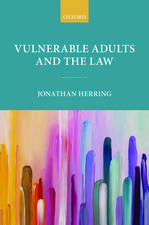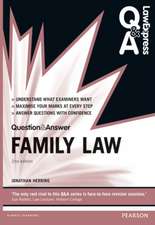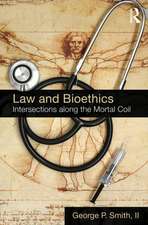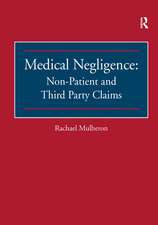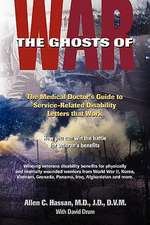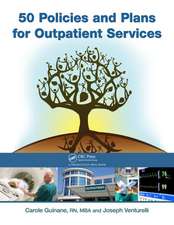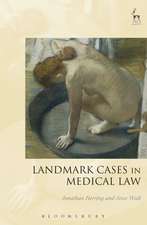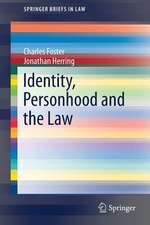Persons, Parts and Property: How Should we Regulate Human Tissue in the 21st Century?
Editat de Dr Imogen Goold, Kate Greasley, Jonathan Herring, Loane Skeneen Limba Engleză Hardback – 24 sep 2014
| Toate formatele și edițiile | Preț | Express |
|---|---|---|
| Paperback (1) | 272.77 lei 43-57 zile | |
| Bloomsbury Publishing – 28 sep 2016 | 272.77 lei 43-57 zile | |
| Hardback (1) | 571.66 lei 43-57 zile | |
| Bloomsbury Publishing – 24 sep 2014 | 571.66 lei 43-57 zile |
Preț: 571.66 lei
Preț vechi: 817.61 lei
-30% Nou
Puncte Express: 857
Preț estimativ în valută:
109.39€ • 114.50$ • 91.04£
109.39€ • 114.50$ • 91.04£
Carte tipărită la comandă
Livrare economică 31 martie-14 aprilie
Preluare comenzi: 021 569.72.76
Specificații
ISBN-13: 9781849465465
ISBN-10: 1849465460
Pagini: 334
Dimensiuni: 156 x 234 x 16 mm
Greutate: 0.66 kg
Ediția:New.
Editura: Bloomsbury Publishing
Colecția Hart Publishing
Locul publicării:London, United Kingdom
ISBN-10: 1849465460
Pagini: 334
Dimensiuni: 156 x 234 x 16 mm
Greutate: 0.66 kg
Ediția:New.
Editura: Bloomsbury Publishing
Colecția Hart Publishing
Locul publicării:London, United Kingdom
Caracteristici
The contributors are all experts in the field and cover the broad spectrum of analyses on offer in this highly debated area.
Notă biografică
Imogen Goold is an Associate Professor in Law at the University of Oxford and a Fellow of St Anne's College.Kate Greasley is a Junior Research Fellow in Law at University College, Oxford.Jonathan Herring is a Professor in Law at the University of Oxford and a Fellow of Exeter College.Loane Skene is a Professor in Law at the Melbourne Law School and an Adjunct Professor in the Faculty of Medicine, Dentistry and Health Sciences at the University of Melbourne.
Cuprins
1. Introduction Imogen Goold, Kate Greasley, Jonathan Herring and Loane Skene 2. Impressions on the Body, Property and Research Dianne Nicol, Don Chalmers, Rebekah McWhirter and Joanne Dickinson3. The Problems of Biobanking and the Law of Gifts Cameron Stewart, Wendy Lipworth, Lorena Aparicio, Jennifer Fleming and Ian Kerridge4. Unintended Side Effects of the National Health Service Thomas Krebs5. Public Umbilical Cord Blood Banking and Charitable Trusts Cameron Stewart, Lorena Aparicio, Wendy Lipworth and Ian Kerridge6. Property Rights in the Human Body: Commodification and Objectification Kate Greasley7. Property Rights in Human Biological Material Simon Douglas8. The Boundaries of Property Law Jesse Wall9. Abandonment and Human Tissue Imogen Goold10. Cadavers, Body Parts and the Remedial Problem Remigius N Nwabueze11. Alternatives to a Corporate Commons: Biobanking, Genetics and Property in the Body Donna Dickenson
Recenzii
...an absolutely exceptional book by some of the world's leading scholars in this area...
...this volume provides a rich picture of the legal and ethical challenges posed by human biomaterials and the strengths and weaknesses of the different possible ways of reforming the law in this area...[A] broad range of views in the body-as-property debate, as well as the disciplines of law, philosophy, and sociology...
...this volume provides a rich picture of the legal and ethical challenges posed by human biomaterials and the strengths and weaknesses of the different possible ways of reforming the law in this area...[A] broad range of views in the body-as-property debate, as well as the disciplines of law, philosophy, and sociology...
Descriere
The contributions in this volume represent a detailed exploration of the salient legal and theoretical puzzles arising out of the body-as-property question, and a collation of the broad spectrum of analyses on offer.

